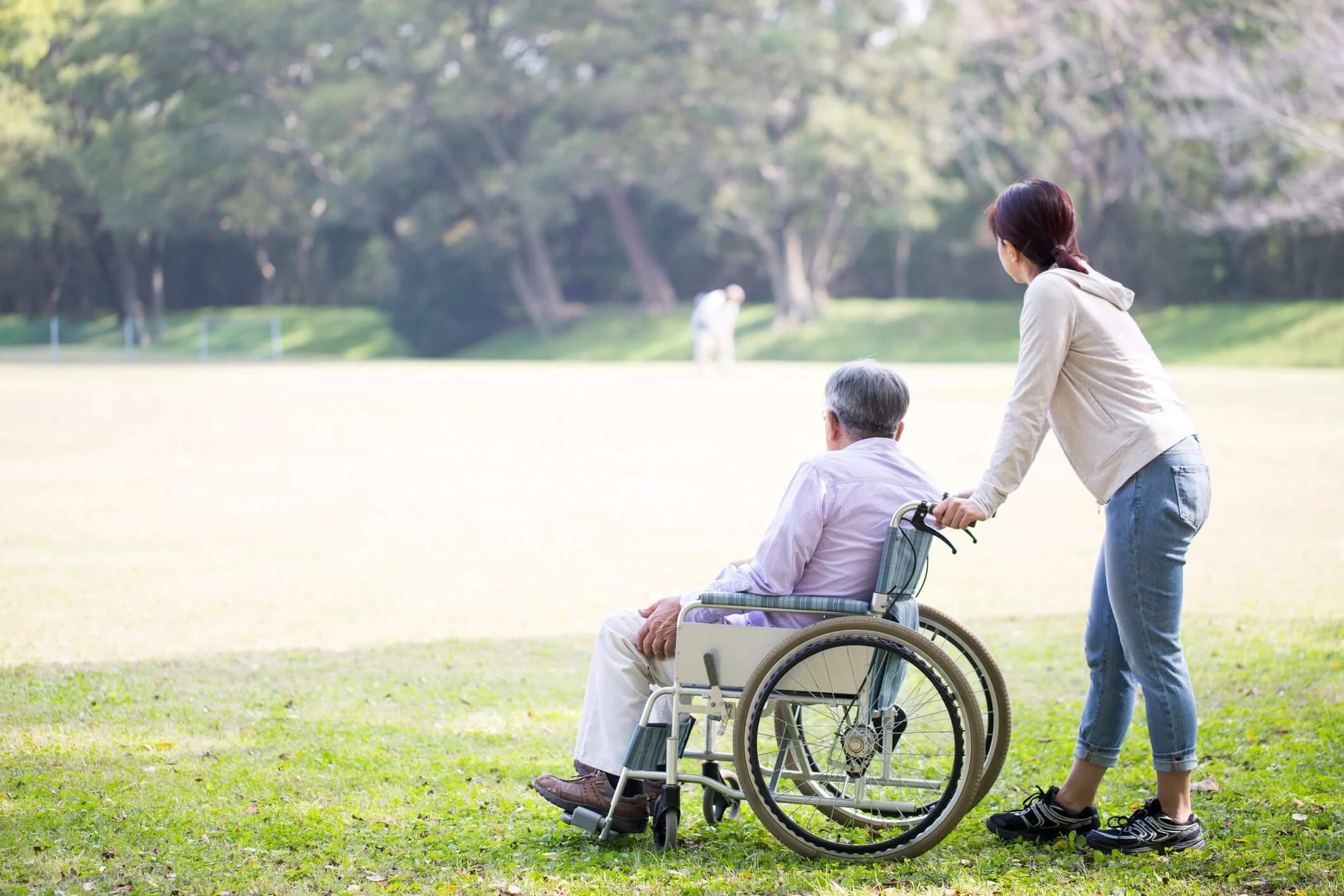What causes difficulty walking in the elderly?
When your elderly mother can’t walk, it feels as though your world is coming to an end. No one should have to watch an aging loved one struggle to move. If you want to help an old person walk, you have come to the right place.
In terms of what causes elderly individuals to deal with walking challenges, the gradual decline of biological functionality is almost always the cause. The muscles, joints and bones in the legs gradually wear down. However, some seniors simply struggle to maintain their balance while walking due to their sedentary lifestyle.
Issues with the sensory nerves, brain, eyes, ears and muscles can all lead to problems with walking including potentially fatal falls. If you notice the senior in your life is unsteady, finding it difficult to maintain balance while walking or has a diminished gait, do not hesitate to ask for assistance.
The sudden loss of mobility is more common than most think. The challenge lies in preventing an uncomfortable predicament such as a situation where you have to figure out how to get an elderly person up the stairs after a fall. You might also be struggling with medication services for elderly, mobility exercises for seniors and offsetting the loss of mobility in legs in elderly.
Senior citizens eventually reach the point at which they find it challenging to walk safely and efficiently. If you notice your parent or other relative can no longer walk with balance, stability and security, it is time to take action in the form of a mobility device, home health assistance and/or additional solutions.
How to help elderly who can’t walk
You can do your part to help an aging relative who cannot walk by asking for assistance from home care providers. A home care specialist will tailor care in accordance with your aging relative’s mobility challenges. Aside from helping patients transition from one room to the next, we can also recommend mobility equipment, tools and devices ranging from wheelchairs to crutches, scooters, stair lifts, walkers, canes and beyond.
It might even make sense to modify the home with additions that help seniors transition between rooms. Examples include rails, grab bars, lifts, etc. Above all, all potential trip/slip and fall hazards such as area rugs and loose cords must be removed as soon as possible. When in doubt, lean on the professionals for in-home care. A senior home care assistant will help your loved one transition between rooms, prepare meals, bathe, dress and more.
Walking tools for elderly
Advances in technology have led to the creation of myriad walking tools for senior citizens. There is no reason for the senior you love so much to be sedentary when he or she can use mobility tools inside and outside of the home. Examples of walking tools for seniors include mobility scooters, wheelchairs, walking canes, crutches and walkers.
Exercise for elderly
When it comes to exercise, most seniors can do more than merely walk from one room in the house to the next. Even if you find it difficult to walk, lifting your legs while sitting in place will enhance your strength, boost blood flow and improve your mood.
Consider water aerobics in which you jog in place while in the water combined with other strength training exercises will bolster your muscle and bone mass, heighten balance and ultimately help to prevent potentially deadly falls. Keep in mind, there is always the option to lift weights in place, use resistance bands or participate in wheelchair sports.
Medications
An elderly relative on medication is a senior at risk for a loss of mobility. Sedatives, antipsychotics, anticonvulsants and medication for those who are hypertensive all have the potential to reduce mobility. Those who are worried about bone health should prioritize vitamin D and calcium.

What to do when elderly parent refuses to walk?
Do not give up right away if your parent refuses to walk. Continue to discuss the matter, making it perfectly clear that refusing to walk inside or outside the home is unacceptable. Suggest using a walker, cane, wheelchair or other mobility aid to facilitate a safe and efficient transition within the home or outside of it. The parent will also be more likely to walk if the house has fewer obstructions. Reduce clutter and move furniture in a manner that clears out walking paths and you will have done your part to reduce the chances of a fall.
If your aging parent or other relative ends up falling or has already suffered a fall, there will be a psychological barrier standing in the way of getting back on his or her feet and walking again. Highlight how assistive walking devices have made it easier for other patients, friends, family members and colleagues to walk after accidents or setbacks. Provide positive affirmation as your loved one begins to warm to the idea of using an assistive device. Even something as simple as personalizing the mobility device with your relative’s initials, a favorite sticker or another customization will encourage him or her to use it all the more as the creative component makes the piece of equipment uniquely his or hers.
The key takeaway is not to give up. Explore all potential avenues when discussing the potential for your parent to walk and live an active lifestyle. In particular, suggesting the assistance of a home health services provider might cause your elderly parent to warm to the idea of living a more active lifestyle with the assistance of a professional.
Get at-home care for elderly parent with mobility issues
Do not let your aging parent or other loved one suffer with mobility challenges one day longer. Opt for professional at-home care provided by a nurse or other assistant eager to help and your loved one will have the assistance necessary to live with dignity. It all starts with an initial call to the at-home care specialists who will analyze your loved one’s condition and begin tailoring care according to his or her unique mobility challenges and other healthcare needs.


